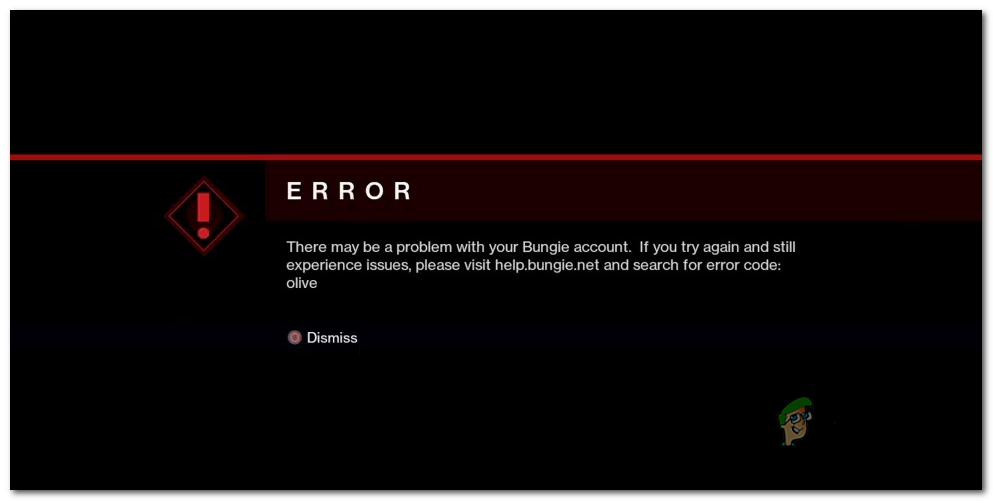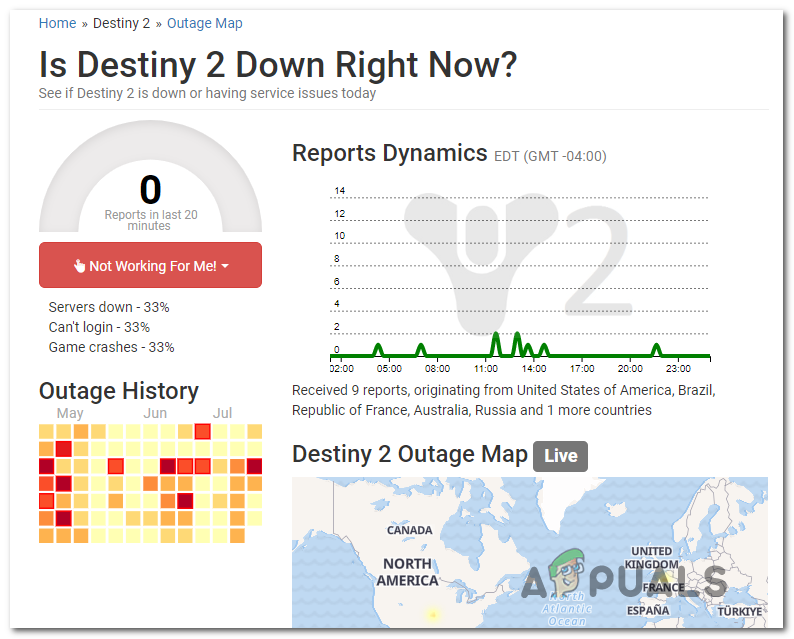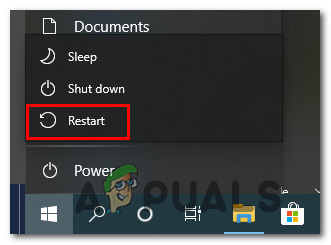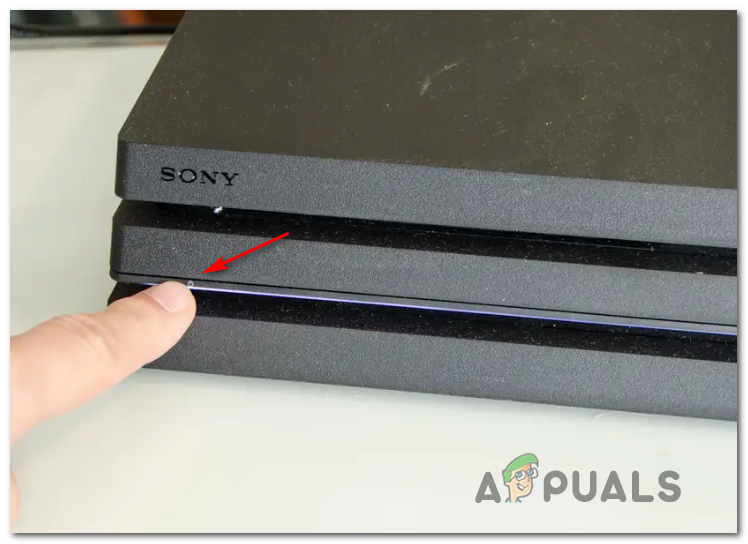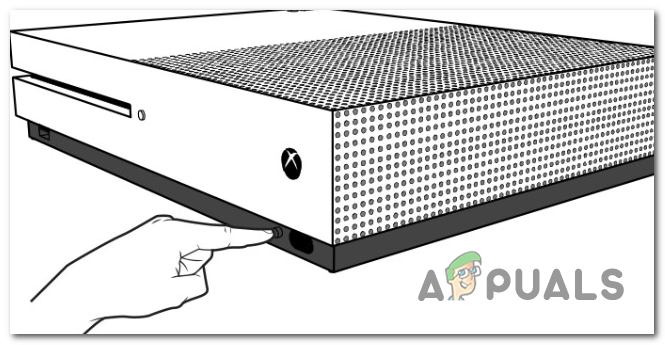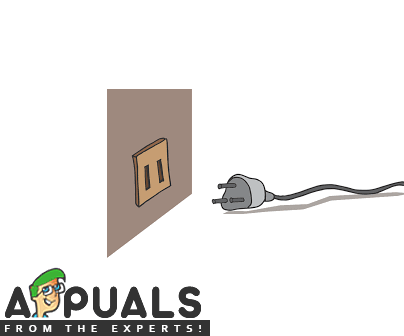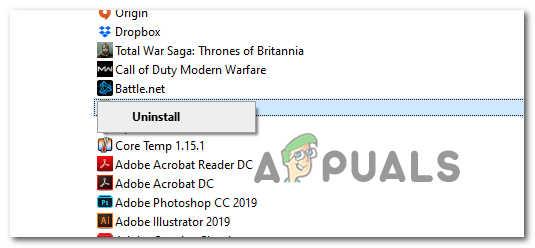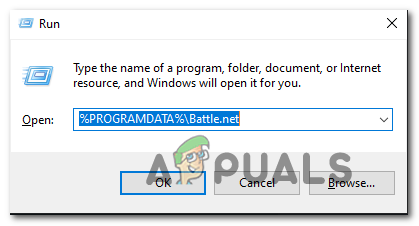After investigating this particular issue, it turns out that there are several different instances that might be responsible for the partition of this issue:
Method 1: Checking for a Server Issue
Before trying out any other fix that was confirmed to work by an affected user, you should begin this troubleshooting guide by investigating whether other Destiny 2 users in your area are also encountering the same problem. Keep in mind that this particular error code is typically associated with some kind of server issue, so it’s highly recommended that you start by investigating whether you’re actually dealing with a widespread error. To check for this instance, you can use services like Outage.Report and DownDetector to see if other users in your area are reporting the same issue as you’re facing it. Even if you uncover no evidence of issues related to Destiny 2 servers, you should take a look at the status page of Destiny 2 and visit Bungie’s official Twitter Destiny 2 support account to see if they are any official announcements regarding the server issue. If the investigations you just performed haven’t revealed any evidence of a server issue, move down to the next potential fix below.
Method 2: Connect with a Bungie account
Often times, the ‘Olive’ error code in Destiny 2 is associated with an instance in which the user is not connected with a Bungie account. Several affected users that were also encountering this issue have confirmed that the problem was resolved after they connected with a valid Bungie account. So if you haven’t done this already, restart Destiny 2 and follow through when asked to set up a Bungie account. After you do this and validate your account, join an online game, and see if the problem is resolved. If you already set up your Bungie account, move down to the next potential fix below.
Method 3: Restarting the PC / Console
If you didn’t try this already, you should start this troubleshooting guide by going for a simple platform restart. This is confirmed to be effective on both Windows and current-gen consoles (Xbox One and PlayStation 4). On PC, simply close the game and use the Windows button to click on Power > Restart, then wait for the next startup to complete before launching the game once again. On consoles, a restart is not sufficient since it both PlayStation 4 and Xbox One will preserve some temp files that aren’t cleared with a regular restart. So if you’re encountering the issue on a console, the proper procedure is to go for a power cycling procedure. Follow the guide applicable to your console of choice:
A. Power cycling your Playstation 4 console
B. Power cycle your Xbox One console
In case you’re still seeing the ‘Olive’ error code after being disconnected from a Destiny 2 online game, move down to the next potential fix below.
Method 4: Reinstalling Destiny 2 (PC Only)
If you’re encountering this problem on a PC (after Destiny 2 completed the move from Battle.Net to Steam) it’s possible that you’re seeing this error due to some leftover files left behind by the old installation. If this scenario is applicable, you should try uninstalling the Battle.Net version of Destiny 2 and clear the cache data of Battle.Net before reinstalling the game from Steam. To make the whole process easier for you, we’ve put together a step-by-step guide that will walk you through the whole thing. Here’s what you need to do:
Destiny 2 and Fortnite Crossover Event Leaked New Fortnite Skins Revealed For…Destiny 2 X Fortnite Crossover Officially Happening, New Destiny 2 Skins…Fix: Destiny Error Code WeaselFix: Destiny Error Code Beetle
